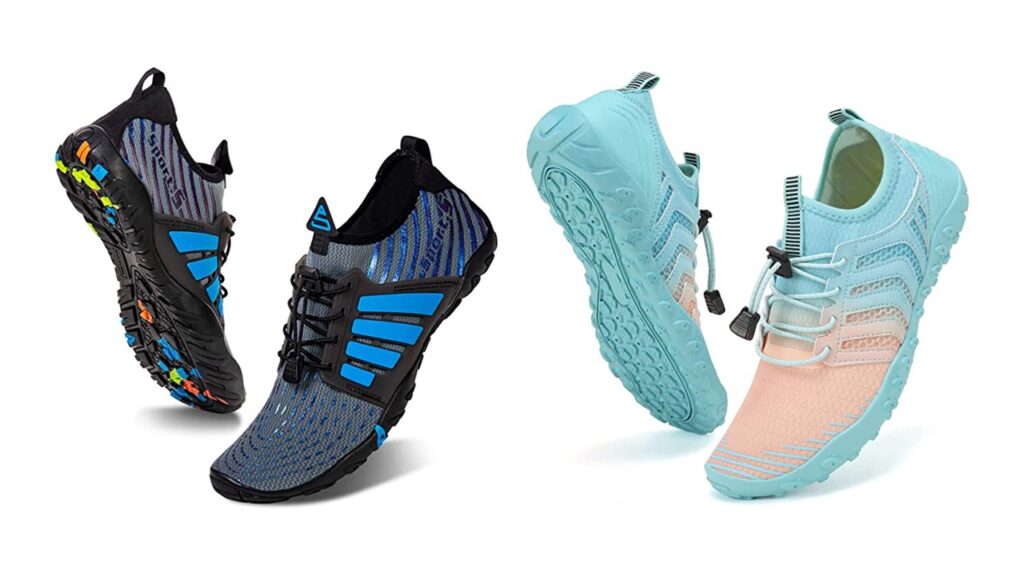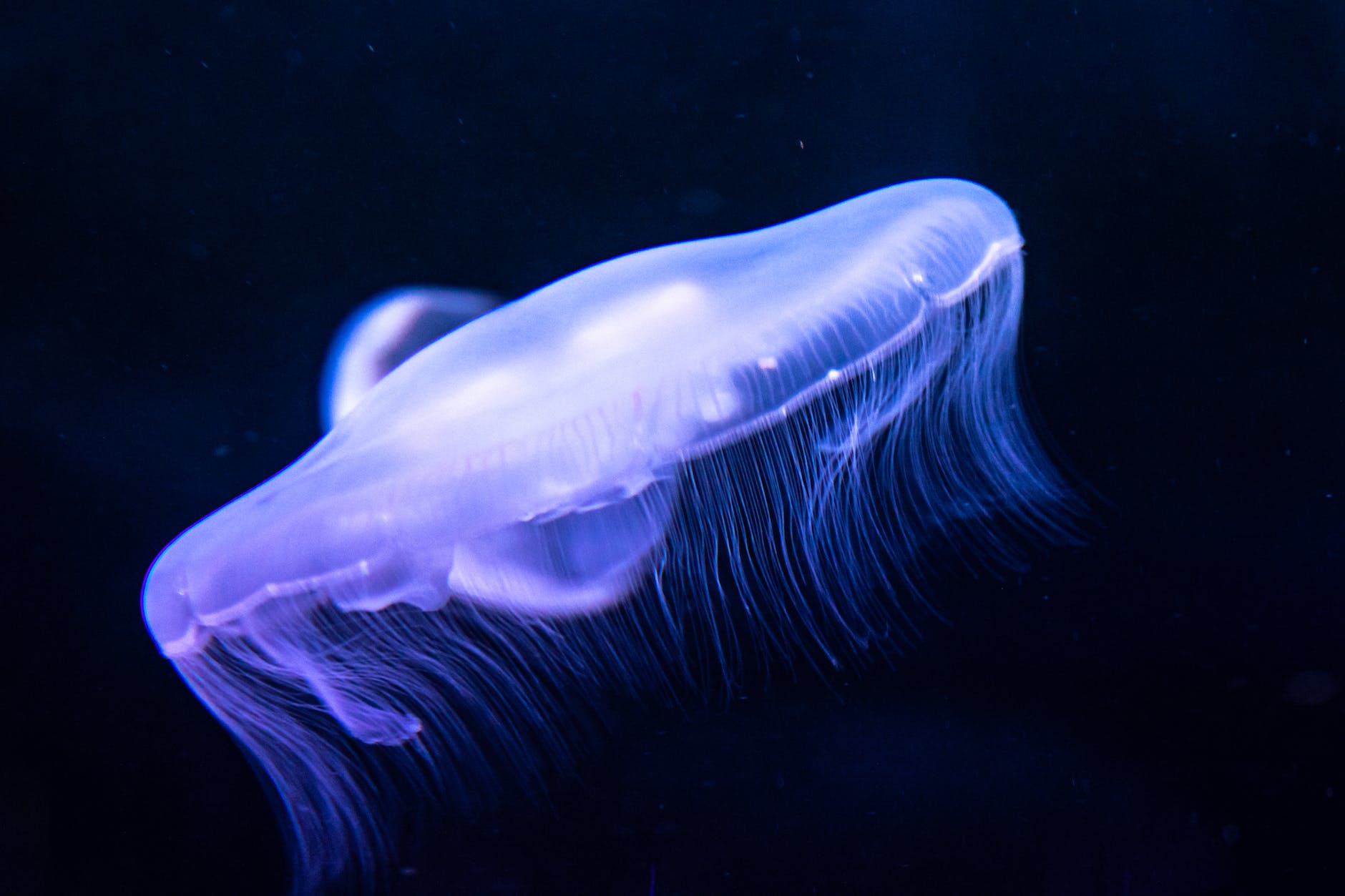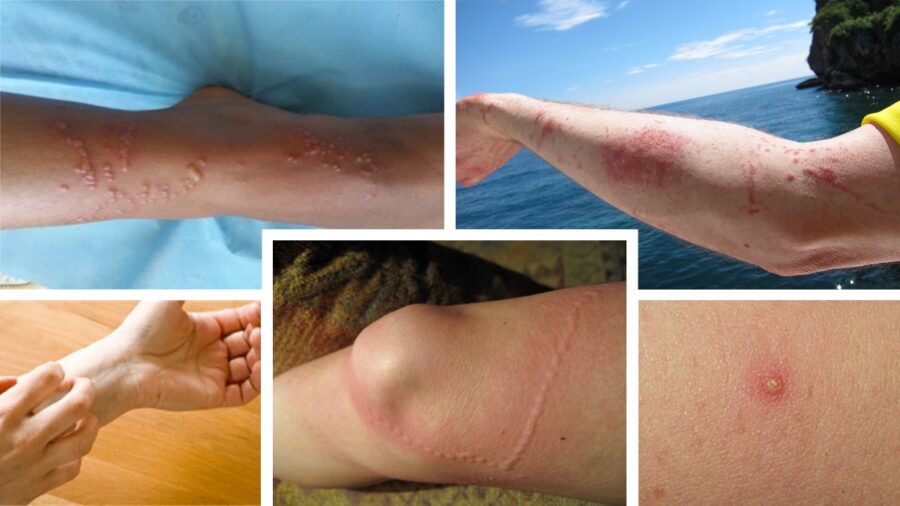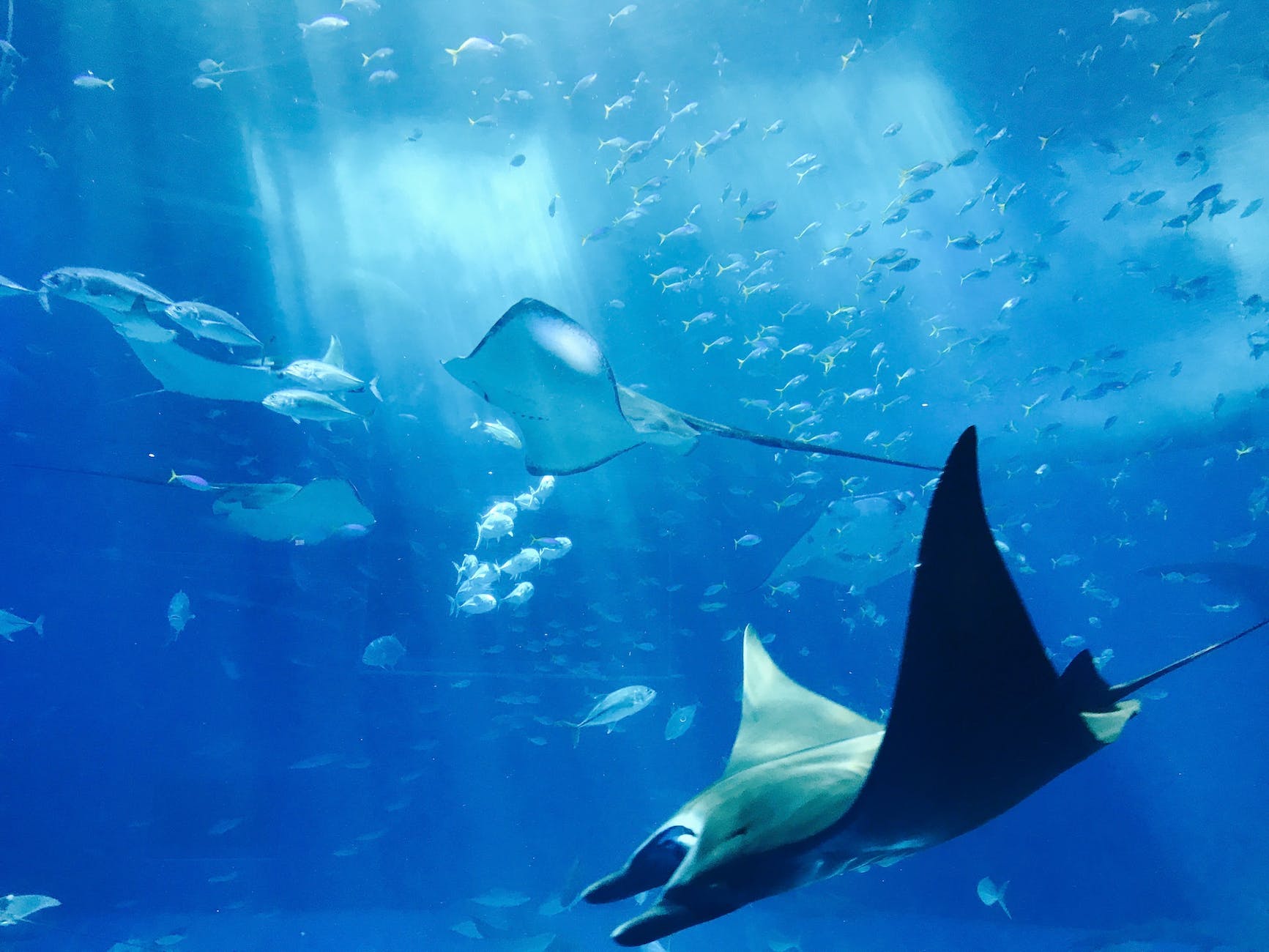Do Water Shoes Protect From Jellyfish? Find Out Now!
Do water shoes protect from jellyfish? If you’ve ever been stung by one of these mysterious and often fearsome creatures while enjoying a day at the beach or engaging in water activities, you know how painful and unsettling the experience can be.
Jellyfish stings can be both painful and potentially devastating. When a person comes into contact with a jellyfish tentacle, specialized cells called nematocysts release venom into the skin. This venom can cause an array of symptoms, ranging from mild irritation and redness to severe pain, swelling, and even systemic reactions in some cases.
In this article, we will dive deep into the world of jellyfish stings and explore the potential protective abilities of water shoes. We’ll uncover the truth behind this burning question, shedding light on whether these popular footwear choices can truly shield you from the wrath of jellyfish.
Do Water Shoes Protect From Jellyfish
Yes, water shoes can provide some protection from jellyfish stings. The thickness of the sole and the material of the shoe are important factors in determining how effective water shoes are at preventing jellyfish stings.
Water shoes with a thicker sole and a more durable material are more likely to protect your feet from the stinging cells of jellyfish.
In addition to the thickness of the sole and the material of the shoe, the presence of a protective toe cap can also help to reduce the risk of a jellyfish sting. A toe cap can help to protect your toes from being stung by the tentacles of a jellyfish.
However, it is important to note that water shoes do not provide complete protection from jellyfish stings. Some jellyfish have very fine tentacles that can penetrate even the thickest sole of a water shoe.
Additionally, water shoes cannot protect you from jellyfish stings that occur above the waterline, such as if a jellyfish stings you while you are wading in shallow water.
If you are concerned about the risk of jellyfish stings, you may want to consider wearing a wetsuit or stinger suit in addition to water shoes. Wetsuits and stinger suits provide more comprehensive protection from jellyfish stings than water shoes alone.
The Best Water Shoes To Protect Against Jellyfish
Just like urchin shoes and stingray shoes, you need jellyfish shoes. When it comes to protecting yourself from jellyfish stings during water activities, having the right water shoes can make a significant difference. Let’s dive in and discover the top contenders for the best water shoes for jellyfish protection.
1. Neoprene Water Shoes
Neoprene water shoes are widely regarded as one of the best options for protecting against jellyfish stings. These shoes are specifically designed for water activities and offer a range of features to ensure both comfort and safety in the water. They are perfect for both jellyfish and stingrays.
Features
Neoprene Material: Neoprene water shoes are made from a synthetic rubber material known for its excellent durability, flexibility, and resistance to water absorption.
Protective Design: These shoes typically have a closed-toe construction, providing added protection against jellyfish stings and other potential hazards in the water.
Secure Fit: Neoprene water shoes often feature adjustable straps or closures, allowing for a customized and secure fit to prevent slipping or discomfort during water activities.
Non-Slip Sole: The outsole of neoprene water shoes is designed with a textured or patterned surface, offering enhanced traction on wet surfaces, preventing slips and falls.
Quick-Drying: Neoprene has inherent quick-drying properties, allowing water shoes to dry rapidly after use, reducing the risk of moisture-related issues such as odor or discomfort.
Pros
Excellent Protection against jellyfish stings and potential injuries in the water.
Comfortable Fit
Enhanced Traction
Durable and Long-lasting
Versatile Use
Cons
Limited Breathability
Potential Sizing Challenges
2. Merrell Men’s Waterpro Maipo 2 Water Shoe
The Merrell Men’s Waterpro Maipo 2 Water Shoe is designed to provide optimal protection and comfort during water activities. Its synthetic leather and mesh upper offer durability and breathability, allowing your feet to stay cool and dry.
The lightweight EVA foam midsole ensures stability and cushioning for a comfortable stride. With a traditional lace closure, you can easily adjust the fit to your preference. The breathable mesh lining enhances airflow, further enhancing the shoe’s comfort.
Features
Synthetic and mesh upper for durability and breathability.
Ethylene Vinyl Acetate (EVA) sole for lightweight cushioning and traction.
Traditional lace closure for a secure and adjustable fit.
Lightweight EVA foam midsole provides stability and comfort.
Breathable mesh lining enhances airflow for added comfort.
Pros
Offers durable protection against jellyfish stings.
Lightweight design for improved agility and comfort in the water.
Adjustable lace closure ensures a secure fit.
The breathable mesh lining helps keep feet cool and dry.
Provides stability and cushioning for all-day comfort during water activities.
Well cushioned ankle
Cons
The shoe may require some break-in time for optimal comfort.
Limited color options may not appeal to all preferences.
Not slip-on
3. Akk Womens Hiking Water Shoes
The Akk Women’s Hiking Water Shoe is designed to offer optimal protection and comfort during water activities and hikes. With a quick-dry feature and drainage holes, it ensures efficient water drainage and keeps your feet dry.
The double mesh upper provides breathability and protects against small stones and debris. The durable MD+TPR sole with non-slip texture offers excellent traction on various surfaces. These lightweight shoes are easy to put on and feature a heel pull tab for quick entry.
Features
MD+TPR sole for durability and non-slip traction.
Quick-dry with drainage holes for efficient water drainage.
Double mesh upper for breathability and protection against elements.
Thick heel and toe cap for foot safety and cushioning.
Lightweight design with a heel pull tab for easy on/off.
Pros
Efficient drainage system keeps feet dry and comfortable.
Double mesh upper provides breathability and protects against elements.
Durable sole with non-slip texture offers excellent traction on various surfaces.
Heel and toe cap offer foot safety and cushioning against sharp objects.
Slip on and laces for adjustable fit.
Lightweight design and easy on/off feature enhance overall comfort and convenience.
Cons
Size 11 is the maximum.
Limited color options may not appeal to all preferences.
4. WateLves Water Shoes Mens Womens Beach Swim Shoes
The WateLves Water Shoes are designed to provide exceptional protection and comfort during water activities. With a rubber sole and thick foam arch-support insert, they offer both flexibility and foot safety from rocks and stones.
The anti-slip rubber sole, with a protective toe guard, ensures stability and durability. These shoes feature quick-drying properties with drainage holes for a cooler and healthier shoe environment. The breathable and stretchable fabric, along with the ergonomic design, offers a snug and comfortable fit.
These ultra-lightweight shoes provide a fashionable and flexible alternative to bulkier water shoes.
Features
Rubber sole for flexibility and foot protection.
Comfortable foam arch-support insert for added cushioning.
Anti-slip outsole with toe guard for stability and durability.
Quick-dry with drainage holes for a cooler and healthier shoe environment.
Breathable and stretchable fabric with an ergonomic design for a comfortable fit.
Pros
Excellent foot safety and protection from rocks and stones.
Anti-slip rubber sole ensures stability and durability.
Quick-drying with drainage holes for enhanced comfort.
Lightweight and flexible, offering great freedom of movement.
Fashionable design and individual character.
Cons
Some users may find the sizing to be slightly off, so careful fitting is recommended.
Sizing may not be perfect for women.
5. Alibress Water Shoes for Women Men Quick-Dry Aqua Shoes
The Alibress Water Shoes are designed to provide excellent protection and comfort during water activities. With an expanded thermoplastic polyurethane (ETPU) sole, they offer durability and flexibility.
These lightweight aqua shoes provide a cloud-like wearing experience, making them comfortable and flexible for everyday use. The knitted upper is wear-resistant, breathable, and skin-friendly, designed with hollow mesh for quick draining and drying.
The upgraded drainage sole enhances arch support, shock absorption, and water drainage, while the non-slip and wear-resistant traction textures ensure safety on various surfaces. With their one-piece tongueless design and adjustable elastic shoelaces, they are easy to put on and take off.
Features
Expanded thermoplastic polyurethane (ETPU) sole for durability and flexibility.
Lightweight design for a comfortable wearing experience.
Quick-drying knitted upper with hollow mesh for breathability and drainage.
Upgraded drain sole with enhanced arch support and shock absorption.
Easy to put on and take off with one-piece tongueless design and adjustable elastic shoelaces.
Pros
Lightweight and comfortable, providing a cloud-like wearing experience.
Quick-drying and breathable upper for a cool and dry environment.
Upgraded drain sole enhances arch support, shock absorption, and water drainage.
Non-slip and wear-resistant traction textures ensure safety on various surfaces.
Easy to put on and take off, avoiding the hassle of tying shoelaces.
Cons
Some users may find the sizing to be slightly off, so size up by half.
6. SOBASO Water Hiking Shoes for Men Women
The SOBASO Water Hiking Shoes are designed to provide excellent protection and comfort during water activities. With a rubber sole and open mesh design, they ensure quick drying and breathability, keeping your feet cool and dry.
The non-slip outsole offers reliable traction, while the unique elastic laces make them easy to adjust without the fear of them coming loose. These shoes feature a lightweight and thick rubber sole that provides foot protection, stability, and comfort, making them suitable for the beach and water sports.
They are versatile and ideal for various activities such as water parks, hiking in water, surfing, beach activities, and more. The seller guarantees satisfaction and offers prompt assistance for any inquiries.
Features
Rubber sole for durability and traction.
Open mesh design for quick drying and breathability.
Non-slip outsole and adjustable elastic laces for secure and easy wear.
Lightweight and thick rubber sole for foot protection, stability, and comfort.
Versatile design suitable for various water activities and outdoor sports.
Pros
Quick-drying and breathable, ensuring comfort and dryness.
Non-slip outsole provides reliable traction on various surfaces.
Adjustable elastic laces offer a secure fit without coming loose.
Lightweight design enhances comfort and flexibility.
Versatile for a wide range of water activities and outdoor sports.
Cons
Sizing may be off.
Limited color options may not appeal to all preferences.
7. Mishansha Mens Womens Water Shoes
The Mishansha Water Shoes are designed to provide excellent protection and comfort during water activities. Made with salt-resistant, breathable, and ultra-lightweight Lycra material, these shoes offer fast draining and cross ventilation while being thick enough to protect your feet.
The unique anti-slip rubber sole features multiple holes on each bottom, allowing proper water flow and creating a cooler and healthier shoe environment. With a pull tab at the heel and quick-release laces, these shoes are easy to put on and take off.
The elastic straps enable quick adjustment according to foot width, providing a comfortable fit without the hassle of tying shoelaces.
Features
Spandex fabric for stretchability, breathability, and durability.
Anti-slip rubber sole with multiple holes for proper water flow and a cooler shoe environment.
Easy on and off with a pull tab at the heel and quick-release laces.
Elastic straps for quick adjustment and a comfortable fit without tying shoelaces.
Lightweight and flexible design for a barefoot-like experience.
Pros
Fast draining and cross ventilation for quick drying and comfort.
Excellent protection for your feet with thick yet breathable material.
Anti-slip sole with proper water flow, enhancing safety on various surfaces.
Easy to put on and take off, providing convenience during water activities.
Quick adjustment with elastic straps, eliminating the need for tying shoelaces.
Cons
Runs bigger. So, size down by at least half
8. SEEKWAY Water Shoes Men Women
The SEEKWAY Water Shoes are designed to provide all-round protection, comfort, and flexibility for various water activities. The spandex fabric upper offers breathability and quick-drying capabilities, while the rubber sole provides excellent traction.
With a focus on comfort, these shoes feature an elastic vamp for a snug fit and a convenient slip-on design. The thick rubber soles and toe cap offer foot protection and cushioning, making them suitable for outdoor sports.
These shoes are also amphibious, making them ideal for a wide range of activities from diving and boating to hiking and gardening.
Features
Spandex fabric upper for breathability and quick drying.
Rubber sole with 3D non-slip treads for exceptional grip.
Elastic vamp for a snug fit and easy slip-on/off.
All-round foot protection with thick rubber soles and toe cap.
Amphibious design suitable for various water and outdoor activities.
Pros
Provides all-round foot protection and cushioning.
Exceptional grip even in slippery conditions.
Snug fit and easy slip-on/off for convenience.
Breathable and quick-drying material for comfort.
Versatile design suitable for a wide range of water and outdoor activities.
Cons
No ankle cushioning.
Sizing may run slightly big, so size down by half.
Mechanisms Of Jellyfish Stings (Do Water Shoes Protect From Jellyfish)
Jellyfish stings occur when a person comes into contact with the tentacles of a jellyfish. Understanding the anatomy of jellyfish tentacles and the toxins they release can help us comprehend the effects of their stings on human skin.
1. Anatomy of Jellyfish Tentacles
Jellyfish tentacles are armed with thousands of specialized cells called nematocysts. These cells are coiled structures containing a tiny harpoon-like structure called a cnidocyst. When triggered, the nematocyst forcefully ejects a barbed filament, injecting venom into the target.
2. Toxins Released by Jellyfish
Jellyfish venom comprises a mixture of different toxins, which vary among species. Some common types of toxins include:
– Enzymes: Certain enzymes present in the venom can break down proteins, disrupt cell membranes, and cause tissue damage.
– Neurotoxins: These toxins affect the nervous system, interfering with nerve signal transmission. Neurotoxins can cause pain, muscle spasms, and in severe cases, lead to paralysis.
– Hemolysins: Hemolysins target red blood cells, causing them to rupture and release their contents. This can result in local tissue damage and, in some cases, lead to anemia.
3. Effects on Human Skin
When a jellyfish stings, the venom can have various effects on human skin, which may include:
– Pain and Irritation: Jellyfish stings typically cause immediate pain, burning sensations, and intense itching in the affected area. The severity of pain can vary depending on the species of jellyfish and the individual’s sensitivity.
– Redness and Swelling: Stings often result in localized redness, swelling, and inflammation around the site of contact.
– Skin Reactions: Some individuals may develop skin rashes, hives, or a raised, welt-like appearance known as a “whip welt” at the sting site.
– Systemic Reactions: In rare cases, especially with encounters involving highly venomous species, jellyfish stings can lead to systemic reactions. These may include nausea, vomiting, headache, dizziness, difficulty breathing, and even cardiovascular complications.
It’s important to note that individual reactions to jellyfish stings can vary significantly. Factors such as the type of jellyfish, the amount of venom injected, and an individual’s sensitivity and immune response play a role in determining the severity of the reaction.
Prompt and appropriate first aid, along with seeking medical attention when necessary, is crucial in managing jellyfish stings and minimizing potential complications.
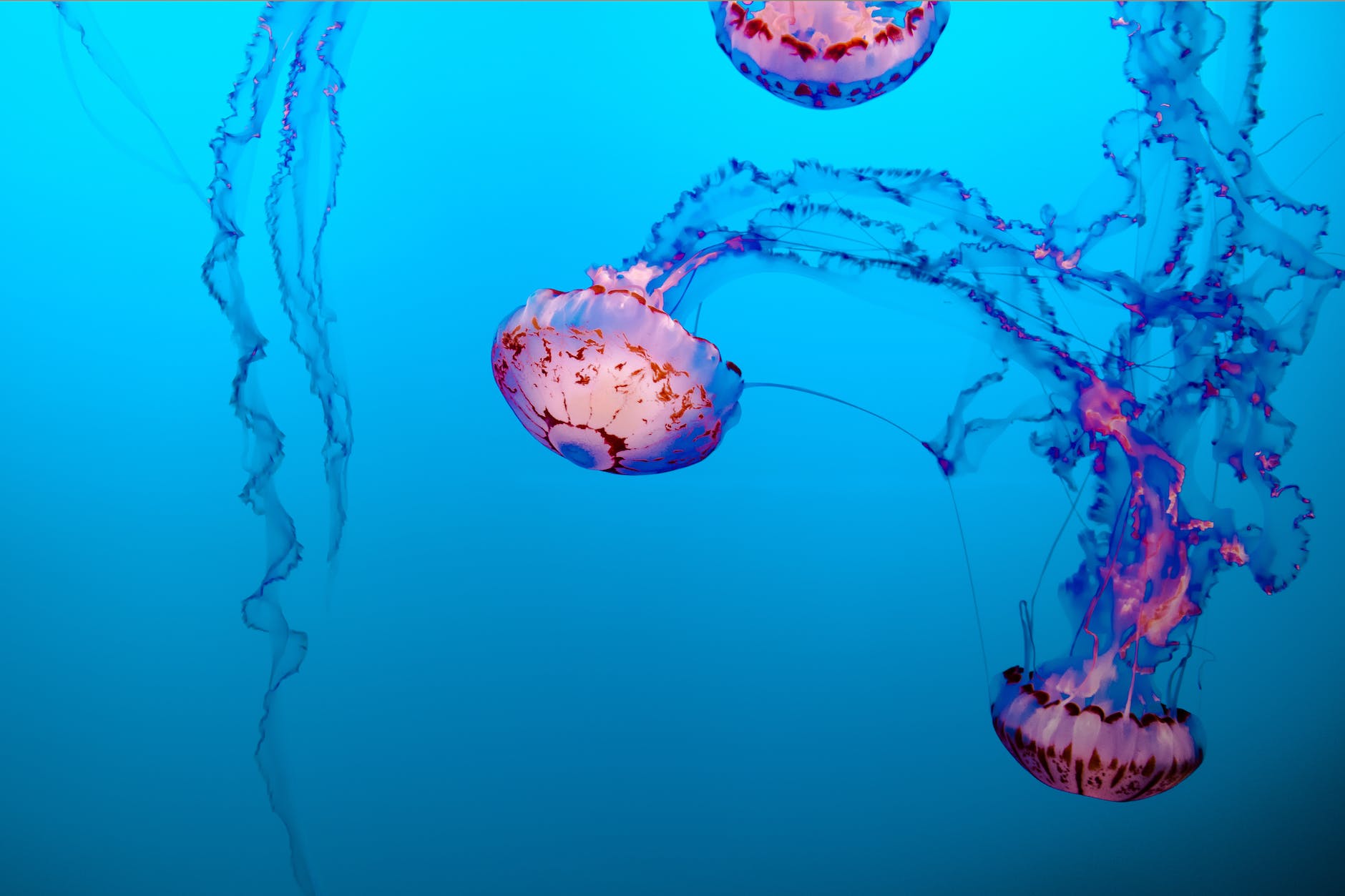
The Best Jellyfish Repellents (Do Water Shoes Protect From Jellyfish)
While jellyfish repellents are not as widely available or scientifically proven as other types of insect or mosquito repellents, there are some products to help deter jellyfish.
It’s important to note that the effectiveness of these products can vary, and their ability to repel jellyfish may not be guaranteed. Here are a few jellyfish repellents:
1. Safe Sea Anti-Jellyfish Sting Protective Lotion: This lotion is designed to create a protective barrier on the skin to prevent jellyfish stings. It contains ingredients that aim to deter jellyfish and reduce the severity of stings.
2. Safe Sea Jellyfish Sting-Blocking Sunscreen: Safe Sea Jellyfish Sting-Blocking Sunscreen is a topical spray that repels jellyfish by creating a chemical barrier. It is designed to be applied to exposed areas of the body before entering the water.
3. NoStingz: NoStingz can help deter jellyfish. You can use it when entering water to prevent jellyfish stings.
4. Seavenger: Seavenger is a jellyfish lotion that can be applied to scare away jellyfish and prevent any sing.
READ ALSO: 15 Best Towable Tube For Boating
Understanding Water Shoes (Do Water Shoes Protect From Jellyfish)
Water shoes are a type of footwear specifically designed for use in aquatic environments. They are crafted with materials that are water-friendly, quick-drying, and offer protection and comfort for activities such as swimming, snorkeling, kayaking, or walking on rocky shores.
The primary functions of water shoes are to provide traction, prevent slips, protect the feet from sharp objects, and potentially offer a layer of defense against various elements present in water, including jellyfish stings.
Different Types of Water Shoes
1. Slip-On Water Shoes: These are lightweight shoes that slip on easily without the need for laces or straps. They often have a snug fit and a flexible sole for enhanced mobility in water.
2. Aqua Socks: Also known as water socks or swim socks, these are thin and flexible shoes made of stretchable fabric. They provide minimal protection and are best suited for activities where grip and traction are not a significant concern.
3. Water Sandals: These shoes combine the features of sandals and water shoes, offering protection to the toes and sole while allowing for better ventilation. They typically have adjustable straps for a secure fit.
4. Neoprene Water Shoes: Made from neoprene material, these shoes provide excellent insulation and are ideal for cold-water activities. They offer a balance between protection and flexibility.
5. Water Sneakers: These shoes resemble athletic sneakers but are designed specifically for water activities. They feature breathable mesh uppers, sturdy soles with drainage holes, and sometimes additional toe protection.
6. Canyoning Shoes: Primarily used for canyoning and similar activities, canyoning shoes are rugged and built to withstand rough terrains. They often have sturdy soles, reinforced toes, and excellent grip on wet surfaces.
7. Dive Boots: Primarily used in scuba diving, these boots provide thermal protection, support, and grip in underwater environments. They are typically made of neoprene and can be worn with or without fins.
When selecting water shoes, factors such as fit, comfort, durability, sole thickness, and protection should be considered. Choosing the right type of water shoe depends on the specific activity, water conditions, and personal preferences.

Protective Features of Water Shoes (Do Water Shoes Protect From Jellyfish)
Water shoes possess certain physical attributes and design elements that can potentially provide protection against jellyfish stings. Let’s explore these features in more detail:
1. Coverage and Enclosure: Water shoes are designed to cover the entire foot, providing a protective barrier against potential jellyfish tentacle contact. Closed-toe designs offer additional coverage, reducing the chances of direct exposure.
2. Thick and Durable Materials: Water shoes are typically constructed using thick and sturdy materials like neoprene, rubber, or synthetic fabrics. These materials provide a degree of resistance to jellyfish stings, acting as a physical barrier between the skin and the venomous tentacles.
3. Tight Fit: Water shoes should fit snugly to minimize the possibility of tentacles finding their way inside the shoe. A secure and well-fitted shoe reduces the chance of direct contact with the jellyfish stinging cells.
4. Reinforced Toe Cap: Some water shoes feature a reinforced toe cap, adding an extra layer of protection to the vulnerable toe area. This feature can be particularly beneficial in areas where jellyfish encounters are common.
5. Sole Thickness: Water shoes often have thicker soles that provide cushioning and insulation. These thicker soles can offer additional protection against stings by reducing the pressure exerted on the foot and potentially limiting the penetration of jellyfish tentacles.
6. Quick-Drying and Water-Resistant Materials: Water shoes are designed to dry quickly and resist water absorption. This feature prevents the shoes from becoming waterlogged and heavy, which could potentially impede movement and increase the risk of jellyfish tentacle entanglement.
7. Traction and Grip: Water shoes often incorporate features such as rubber outsoles with specialized patterns or lugs. These elements enhance traction and grip, reducing the chances of slipping and potentially encountering jellyfish in the water.
While water shoes can provide a level of protection against jellyfish stings, it’s important to note that their effectiveness may vary depending on the specific type of jellyfish, the venomous potency, and the force with which the tentacles make contact.
It is always prudent to complement the use of water shoes with other preventive measures such as avoiding jellyfish-infested areas, wearing protective clothing, and adhering to local safety guidelines.
Limitations of Water Shoes (Do Water Shoes Protect From Jellyfish)
While water shoes can offer a degree of protection against jellyfish stings, there are several factors that can affect their effectiveness. It’s essential to be aware of these limitations to make informed decisions about their use. Here are some scenarios where water shoes might not provide adequate protection:
1. Tentacle Penetration: Some jellyfish species, particularly those with long tentacles like box jellyfish or Portuguese man o’ war, may be able to penetrate the materials or small gaps in water shoes. In such cases, the venomous tentacles may come into direct contact with the skin despite wearing water shoes.
2. Thin Materials: Water shoes made of thin or mesh-like materials may offer limited defense against jellyfish stings. The stinging cells of certain jellyfish species could potentially penetrate through these thinner materials, reducing the protective barrier they provide.
3. Tentacle Wrapping: If a jellyfish tentacle wraps around the foot or ankle area, it may still make contact with the skin even if water shoes are worn. The pressure exerted by the tentacle can potentially push it past the shoe’s coverage, leading to a sting.
4. Inadequate Fit: Ill-fitting water shoes or those that do not securely enclose the foot increase the risk of tentacles finding their way inside the shoe. Loose or improperly fastened shoes may leave gaps or expose areas of the foot, making it easier for jellyfish tentacles to come into contact with the skin.
5. Toxicity of Jellyfish Venom: The effectiveness of water shoes may also depend on the toxicity of the jellyfish venom. Some jellyfish species have extremely potent venom that can cause severe reactions even with minimal contact. In such cases, water shoes may offer limited protection against strong toxins.
6. Reaction Variability: Individuals have different levels of sensitivity and immune responses to jellyfish stings. While water shoes can reduce the likelihood of stings, personal reactions to the venom can vary, and some individuals may still experience adverse effects even with protective footwear.
7. Other Exposure Areas: Water shoes primarily cover the feet and lower extremities, but they do not provide protection to other exposed areas of the body, such as the arms, legs, or torso. Jellyfish tentacles can still come into contact with these unprotected areas, leading to stings.
To mitigate these limitations, it is advisable to complement the use of water shoes with other preventive measures.
These can include avoiding known jellyfish habitats, wearing protective clothing like rash guards or wetsuits, applying jellyfish repellents, and staying informed about local jellyfish warnings or advisories.
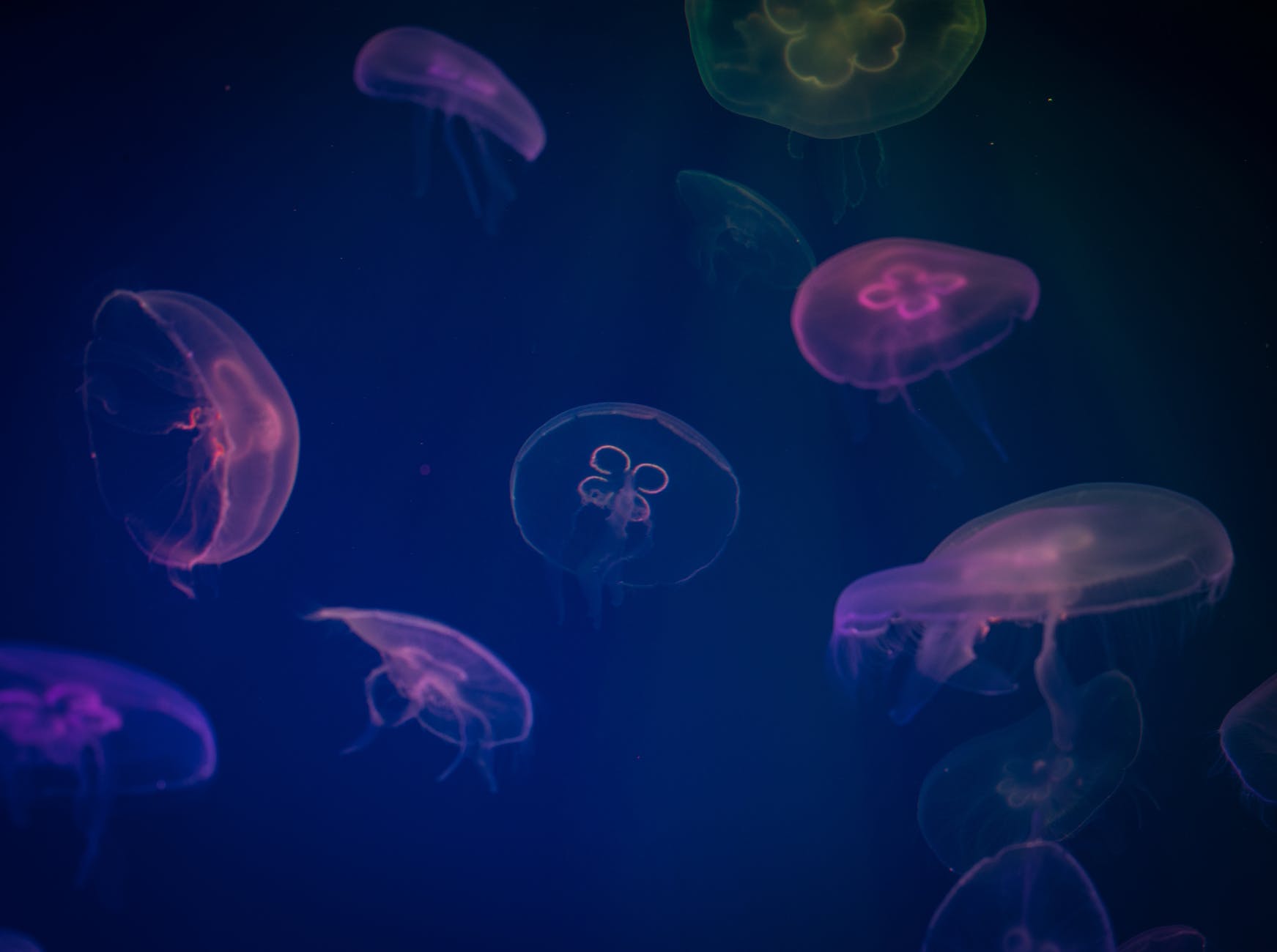
Strategies To Minimize The Risk Of Jelly Fish Stings
To minimize the risk of jellyfish stings, it is important to adopt a combination of precautions and preventive measures. Here is a comprehensive list of strategies to help protect yourself:
1. Stay Informed: Before heading to the beach or engaging in water activities, check local advisories or warnings regarding jellyfish presence. Pay attention to lifeguard announcements and signage that indicate jellyfish activity.
2. Choose the Right Locations: Avoid swimming or snorkeling in areas known to have high jellyfish populations or recent jellyfish sightings. Opt for beaches or locations where jellyfish encounters are less common.
3. Wear Protective Clothing: Consider wearing protective clothing such as rash guards, wetsuits, or dive skins to minimize skin exposure. These garments provide an additional layer of protection against jellyfish stings.
4. Use Water Shoes: While they may not provide foolproof protection, wearing water shoes can offer a barrier against jellyfish tentacles. Opt for water shoes made of thick, durable materials that provide good coverage and a secure fit.
5. Apply Jellyfish Repellents: Use jellyfish repellent products that are specifically designed to deter jellyfish. These repellents can create a barrier on the skin, making it less attractive to jellyfish and reducing the likelihood of stings. Follow the instructions on the product for proper application.
6. Swim in Groups: When possible, swim or snorkel with a buddy or in a group. If someone in the group is stung, they can receive immediate assistance, and others can be alerted to the presence of jellyfish.
7. Be Observant: Keep an eye out for jellyfish in the water. Look for signs such as floating tentacles, jellyfish bodies, or other swimmers reacting to stings. If you spot jellyfish, move away from that area or choose an alternative location.
8. Watch Your Step: When walking on the beach or in shallow waters, be cautious and watch for jellyfish washed ashore. Some species can still deliver a sting even when stranded on the sand.
9. Avoid Sudden Movements: Rapid movements can agitate jellyfish and make them more likely to release venom. When in the water, try to move slowly and steadily to minimize the chances of attracting their attention.
10. Carry Vinegar or Meat Tenderizer: If you are in an area where jellyfish stings are common, consider carrying a small bottle of vinegar or meat tenderizer. These substances can help neutralize the venom and provide temporary relief. Apply them to the affected area if stung.
11. Seek Medical Assistance: If stung by a jellyfish and experiencing severe symptoms such as difficulty breathing, chest pain, or signs of an allergic reaction, seek immediate medical attention. Some jellyfish stings require medical treatment beyond first aid.
Remember, even with the implementation of these preventive measures, it’s crucial to stay vigilant and exercise caution in jellyfish-prone areas. By combining awareness, preparedness, and protective measures, you can minimize the risk of jellyfish stings and enjoy your time in the water more safely.
Safety And First Aid Guide If You Are Stung By A Jellyfish
If you are stung by a jellyfish, it’s important to take immediate action, regardless of whether you are wearing water shoes. Here are the safety and first aid guidelines to follow:
1. Get out of the Water: Remove yourself from the water to avoid further exposure to jellyfish tentacles and potential additional stings.
2. Do Not Rinse with Fresh Water: Rinse the affected area with seawater, not fresh water. Freshwater can trigger the discharge of more venom from the tentacles, worsening the sting.
3. Remove Tentacles: Carefully and gently remove any visible tentacles from the skin. Use a pair of tweezers, a gloved hand, or a credit card to scrape them off. Do not touch the tentacles with bare hands as it can result in more stings.
4. Apply Vinegar: Immediately pour vinegar over the affected area for at least 30 seconds. Vinegar helps neutralize the venom and can provide some relief. Do not use vinegar for certain species of jellyfish, such as box jellyfish, as it may exacerbate the sting. Seek local medical advice if unsure about vinegar use.
5. Soak in Hot Water: After applying vinegar, immerse the affected area in hot water (around 40-45°C or 104-113°F) for 20-45 minutes. Hot water can help alleviate pain and reduce the effects of the venom.
6. Take Over-the-Counter Pain Relief: If necessary, you can take over-the-counter pain relief medication, such as acetaminophen or ibuprofen, to help manage pain and inflammation. Follow the recommended dosage and consult a healthcare professional if you have any concerns.
7. Avoid Scratching or Rubbing: Refrain from scratching or rubbing the sting area, as it can further irritate the skin and potentially release more venom.
8. Observe for Severe Symptoms: Monitor yourself for signs of a severe allergic reaction or systemic symptoms such as difficulty breathing, chest pain, nausea, or dizziness. If experiencing any of these symptoms, seek immediate medical attention.
9. Seek Medical Assistance: In the case of severe pain, a large sting area, or if symptoms persist or worsen, it is important to seek medical assistance. Contact local emergency services or visit the nearest healthcare facility for professional evaluation and treatment.
Jellyfish stings can vary in severity, and individual reactions can differ. While the above steps provide general first aid guidelines, it is always recommended to follow any specific instructions given by medical professionals or local authorities.
Can Jellyfish Sting Through Swimsuit? (Do Water Shoes Protect From Jellyfish)
Jellyfish have the ability to sting through thin fabrics, including swimsuits. While a swimsuit may provide some barrier between the jellyfish and the skin, it is not guaranteed to prevent stings.
The tentacles of jellyfish can penetrate certain fabrics and deliver their venomous stingers, causing discomfort, irritation, and potential allergic reactions.
It’s important to note that the effectiveness of a swimsuit in protecting against jellyfish stings can vary depending on factors such as the type of jellyfish, the thickness and material of the swimsuit, and the force with which the jellyfish stings.
Wearing a swimsuit alone is not a foolproof method of protection against jellyfish stings.
To minimize the risk of jellyfish stings, it is advisable to take additional precautions such as wearing protective clothing, including a rash guard or a wetsuit, in areas where jellyfish are known to be present.
What Should I Wear To Protect Against Jellyfish (Do Water Shoes Protect From Jellyfish)
To protect against jellyfish stings, it is recommended to wear the following:
1. Protective Clothing: Consider wearing a full-body swimsuit, such as a rash guard or a wetsuit, to provide a physical barrier between your skin and the jellyfish tentacles. These garments are typically made of thicker materials that are less likely to be penetrated by jellyfish stingers.
2. Swim Leggings or Dive Skin: In addition to a swimsuit or rash guard, wearing swim leggings or dive skin can provide added protection for your legs and lower body. These garments cover a larger surface area and minimize the exposed skin that could come into contact with jellyfish tentacles.
3. Water Shoes or Dive Boots: Opt for water shoes or dive boots with sturdy soles to protect your feet from potential jellyfish stings. These shoes can also provide traction on slippery surfaces and prevent cuts or abrasions from sharp rocks or corals.
4. Gloves: If you are engaging in activities that involve direct contact with jellyfish-infested waters, such as jellyfish handling or research, wearing gloves made of thick and protective material can be beneficial. This helps shield your hands from potential stings.
5. Sunscreen: While sunscreen does not directly protect against jellyfish stings, it is important to apply a waterproof sunscreen with a high SPF to any exposed areas of the skin. Sunburns or damaged skin can make you more susceptible to jellyfish stings and can exacerbate the effects of a sting.
Although these protective measures can reduce the risk of jellyfish stings, they do not guarantee complete immunity. It’s good to exercise caution, avoid known jellyfish habitats when possible, and stay informed about local conditions and warnings before entering the water.
Does Vaseline Protect From Jellyfish?
There is a common belief that applying petroleum jelly, such as Vaseline, to the skin can provide a protective barrier against jellyfish stings. However, there is limited scientific evidence to support this claim.
Petroleum jelly may create a slick surface on the skin, potentially making it more difficult for jellyfish tentacles to make direct contact. It may also help prevent the adherence of tentacles to the skin, allowing for easier removal.
However, the effectiveness of petroleum jelly as a reliable barrier against jellyfish stings is questionable.
Jellyfish stingers, known as nematocysts, can be quite small and may still be able to penetrate the layer of petroleum jelly. Additionally, the tentacles of certain jellyfish species can deliver stingers through folds or gaps in the skin, where the petroleum jelly may not provide complete coverage.
It’s important to note that relying solely on petroleum jelly for protection against jellyfish stings is not recommended.
It is best to prioritize other preventive measures, such as wearing protective clothing, using appropriate swimwear, and following local safety guidelines when swimming in areas known to have jellyfish.
The Bottom Line On Do Water Shoes Protect From Jellyfish
When it comes to the question “Do water shoes protect from jellyfish,” it’s clear that water shoes offer valuable benefits in terms of protecting against jellyfish stings.
While water shoes may provide a physical barrier and some level of protection, it’s important to note that they are not foolproof and other preventive measures should also be taken.
To minimize the risk of jellyfish stings, consider wearing water shoes with closed toes and sturdy soles, along with other protective clothing such as rash guards or wetsuits. Additionally, being aware of jellyfish presence, avoiding known jellyfish-infested areas, and following proper safety guidelines are essential.



